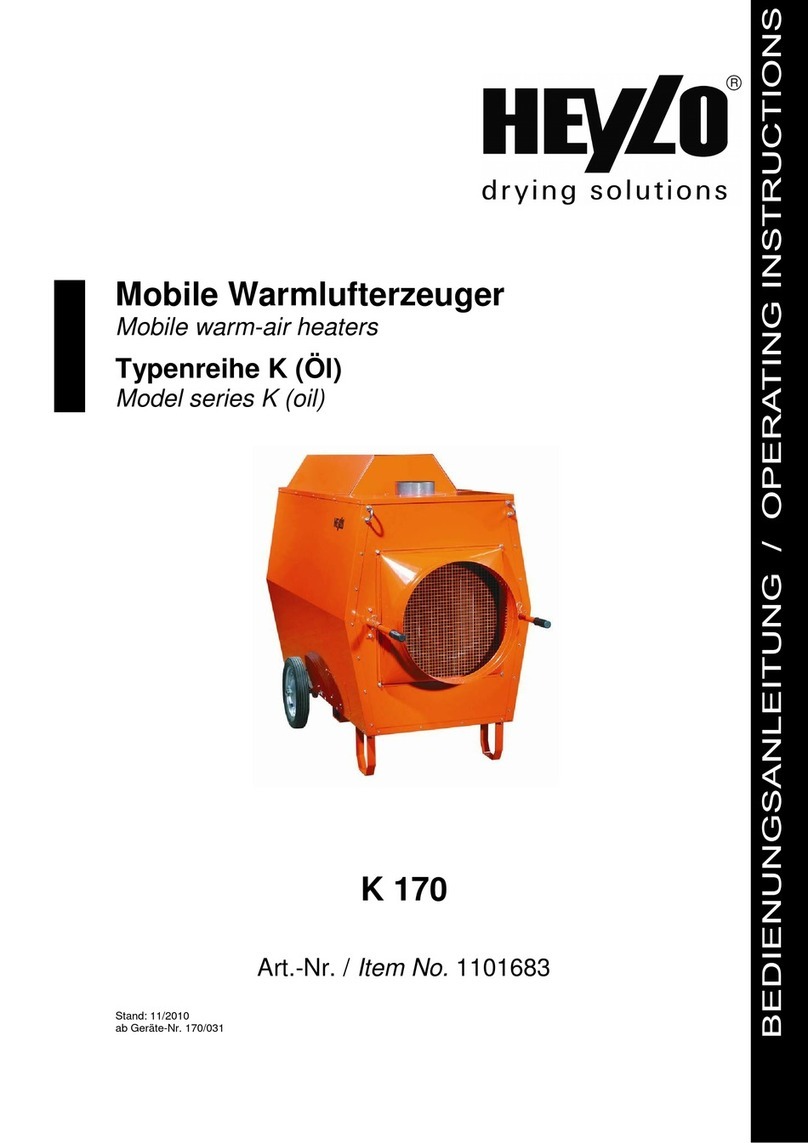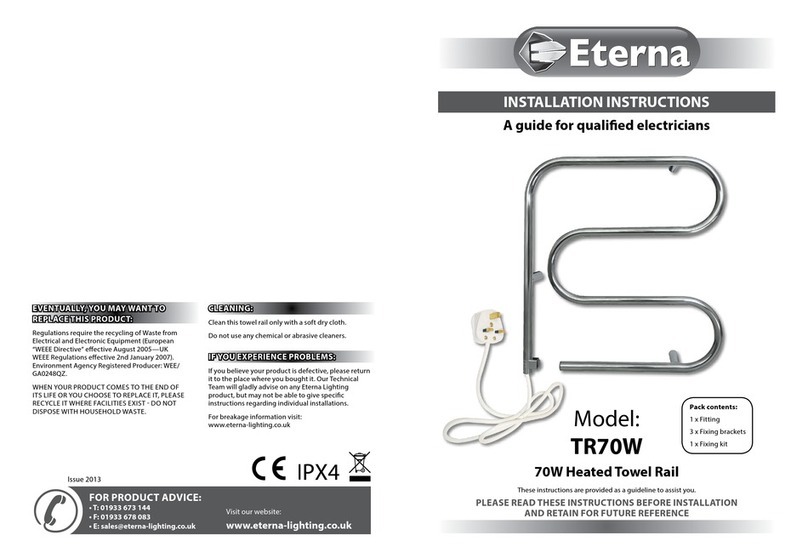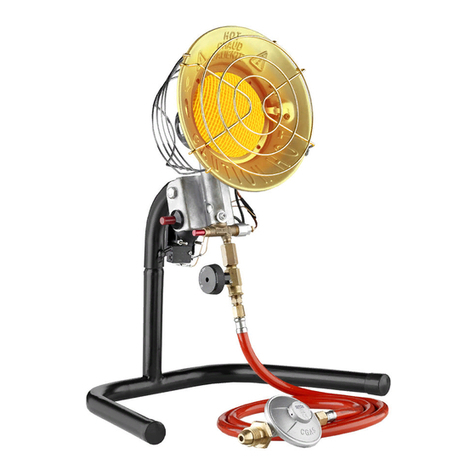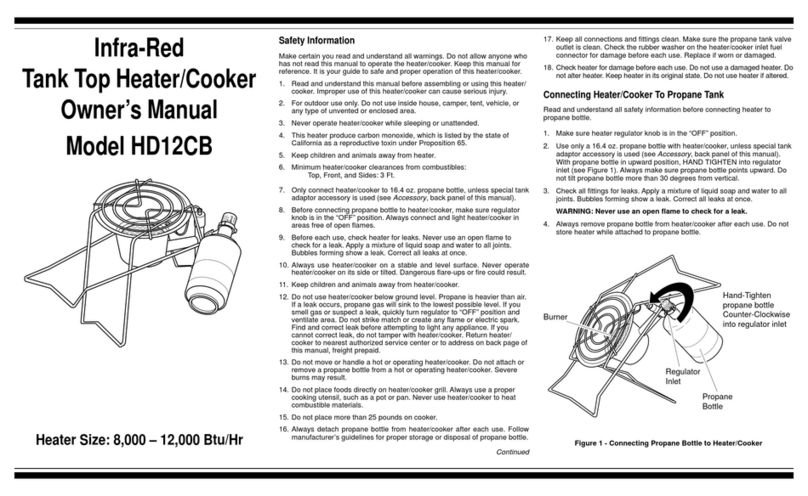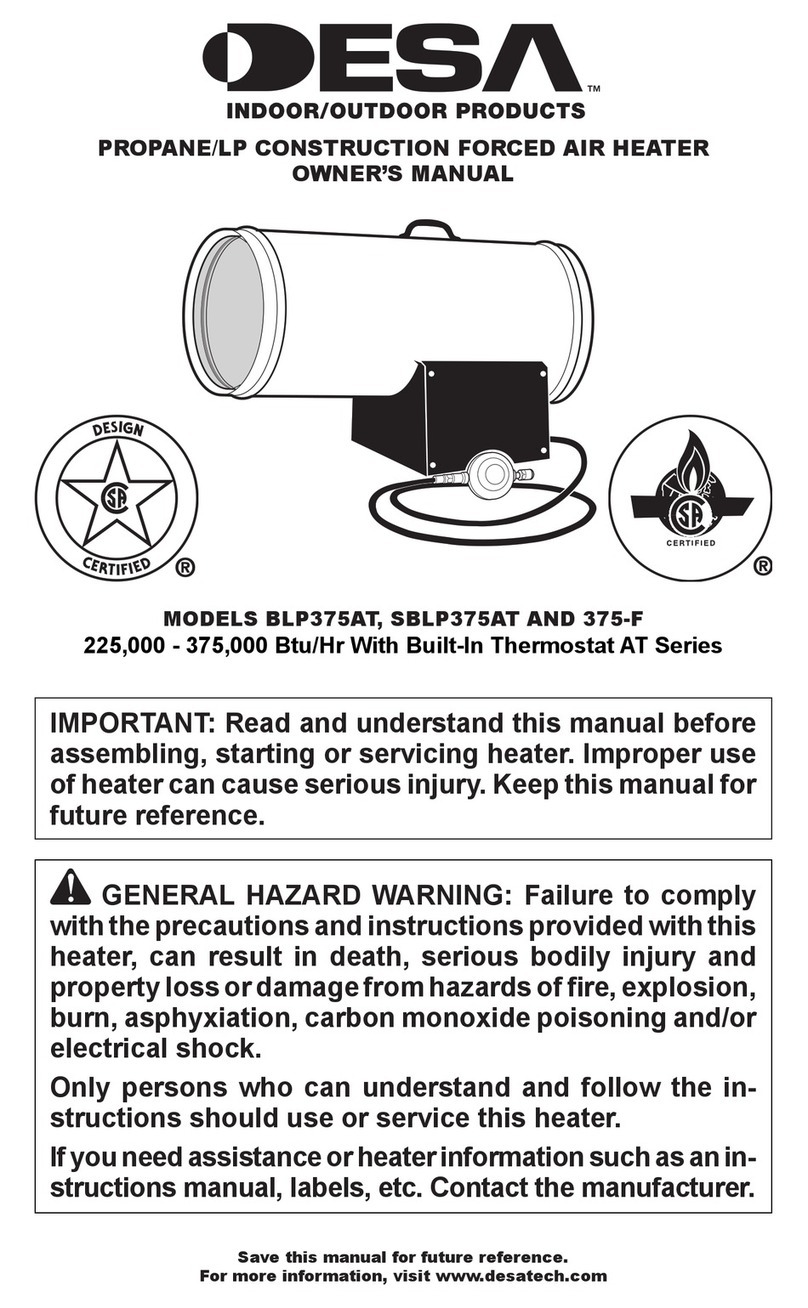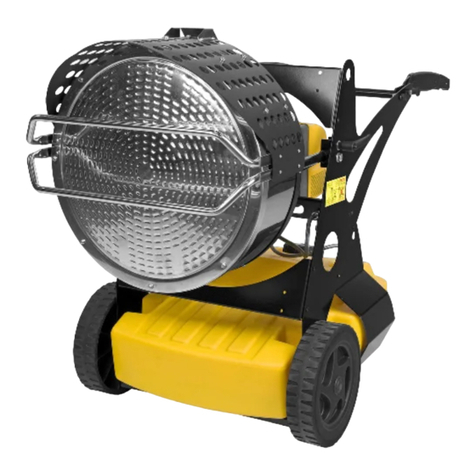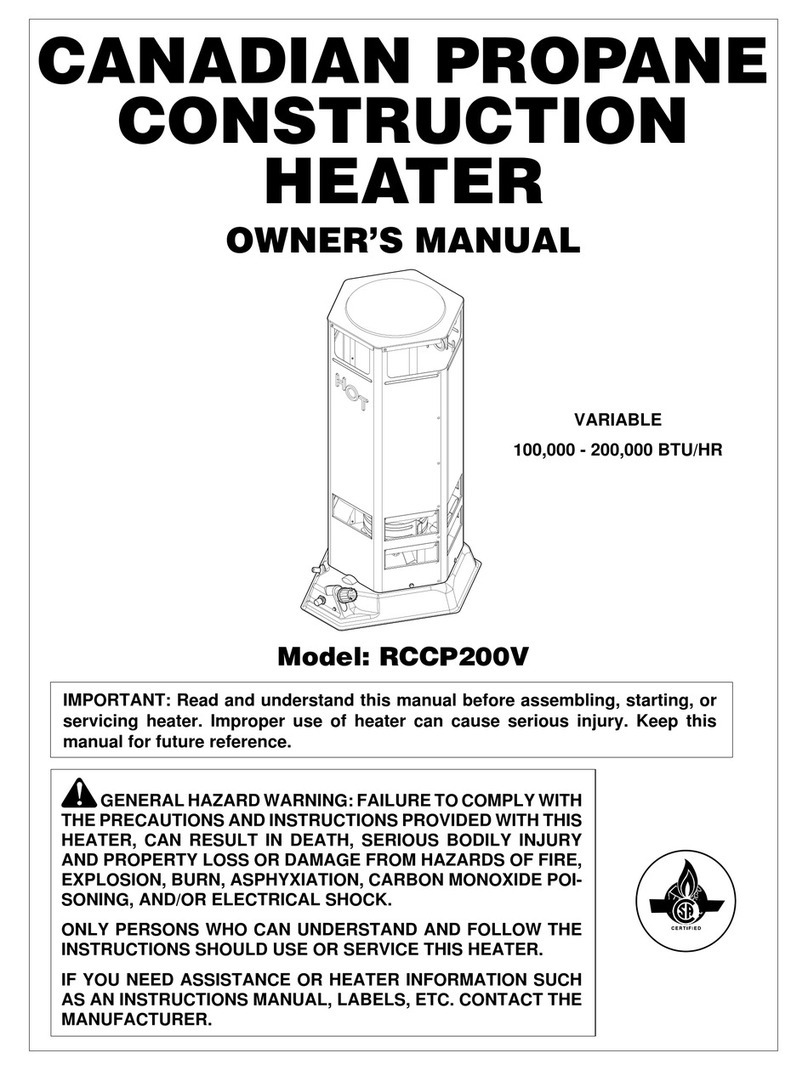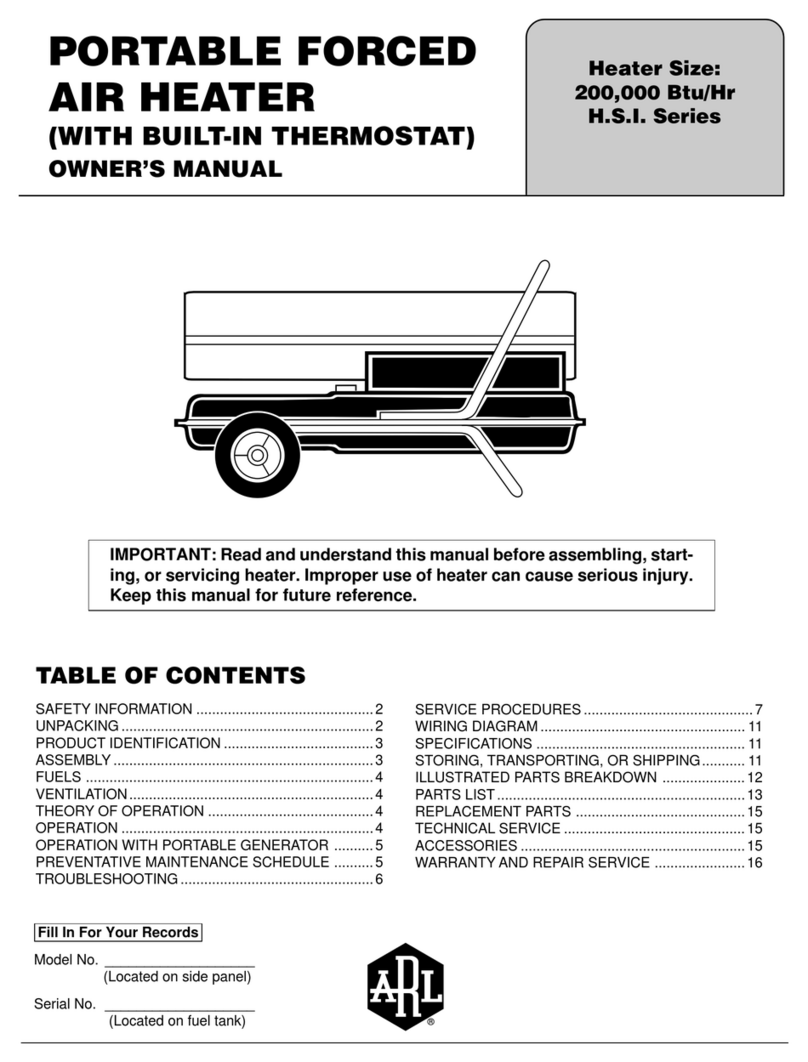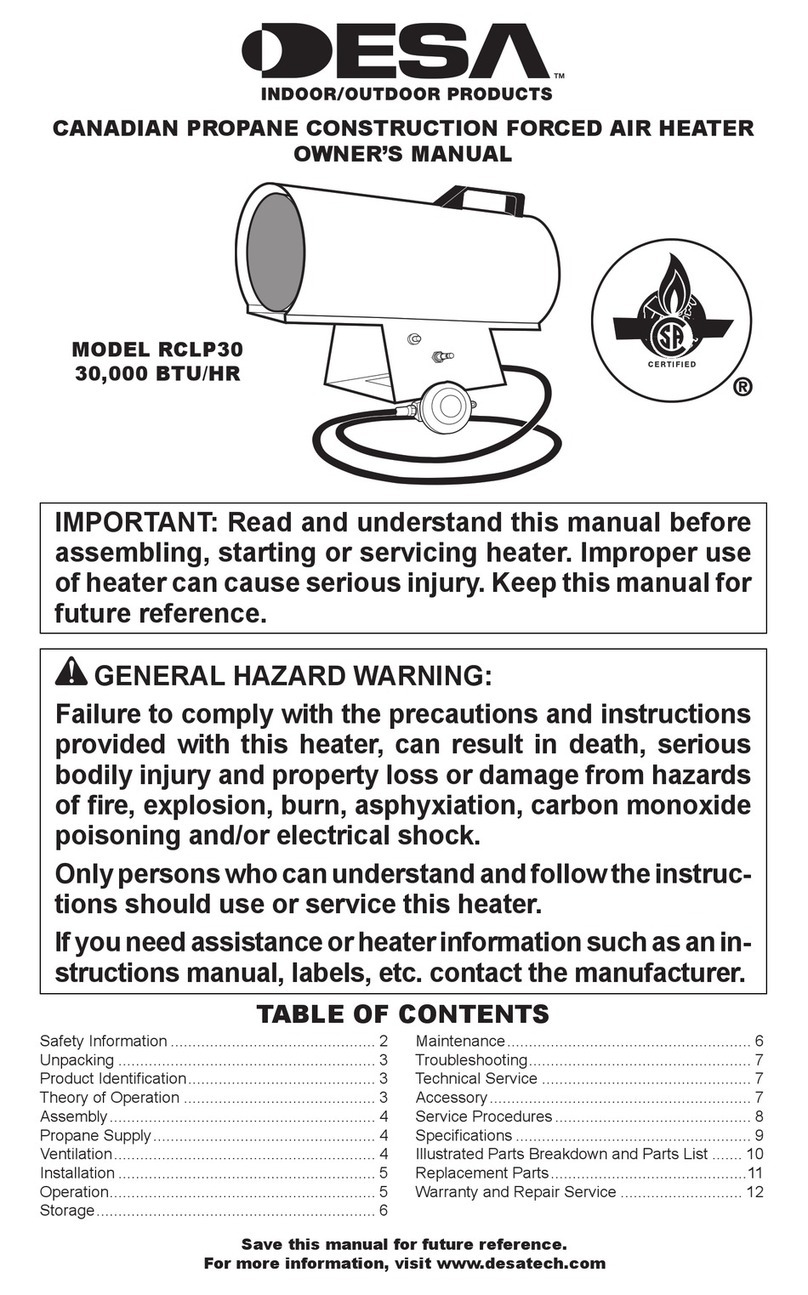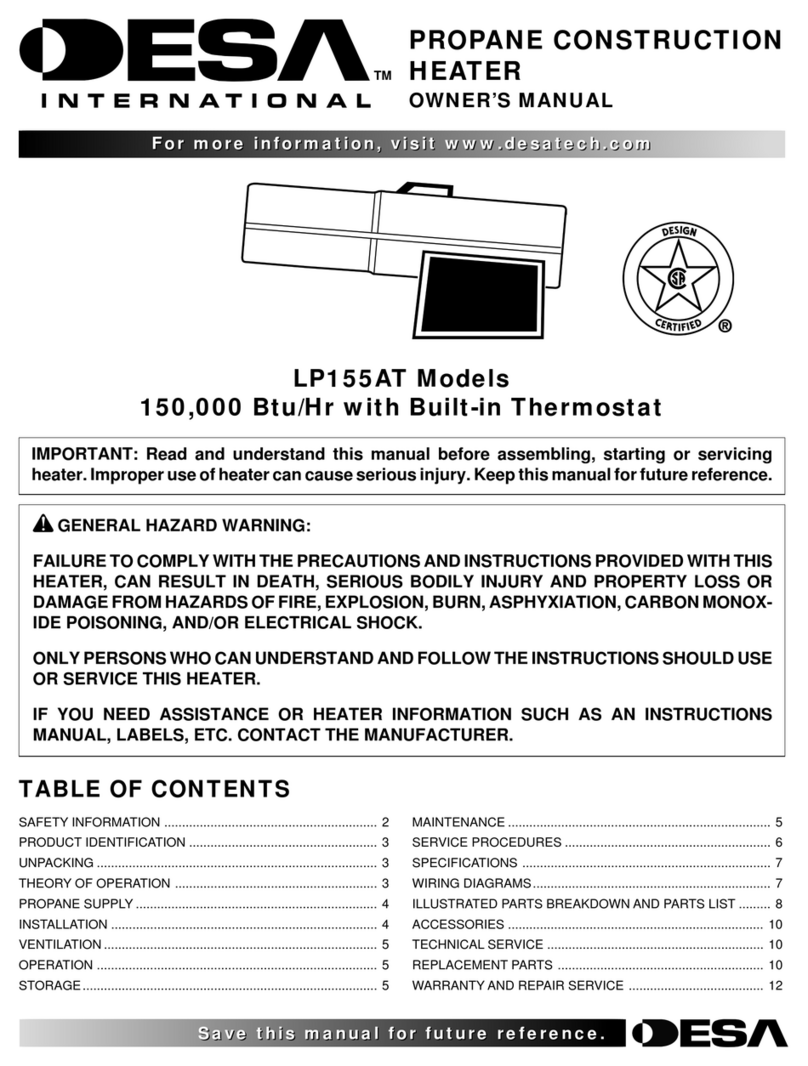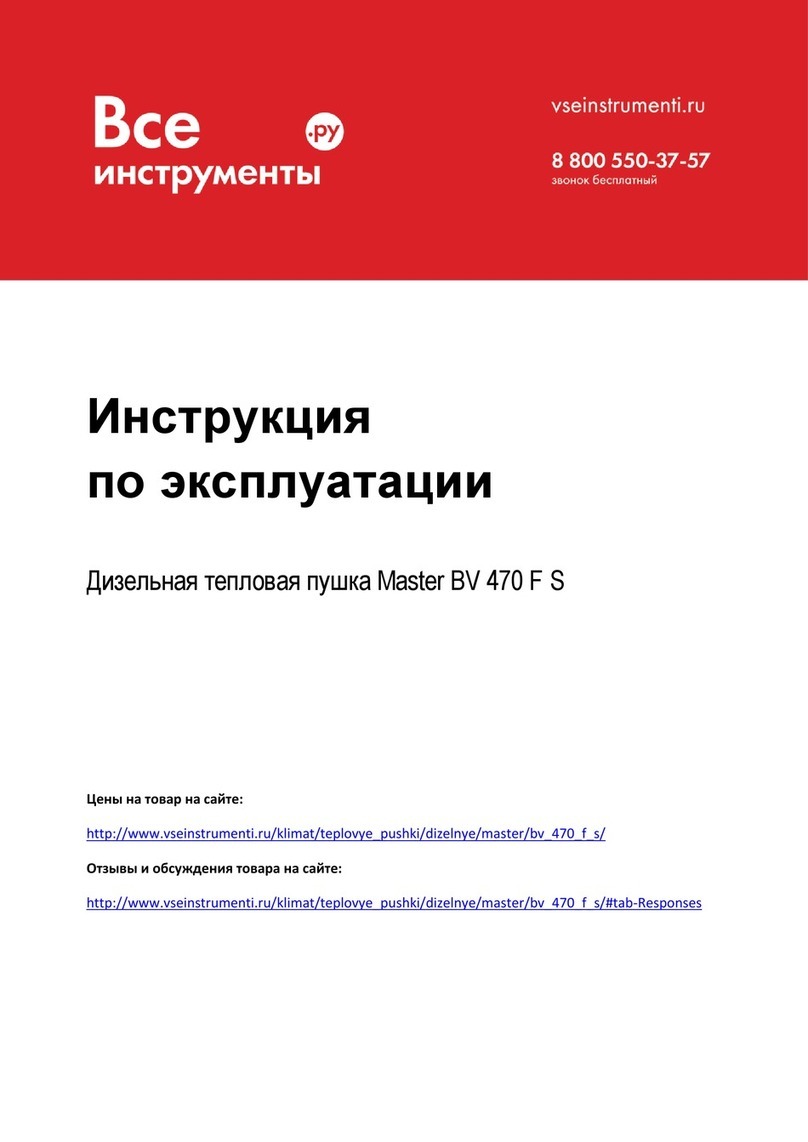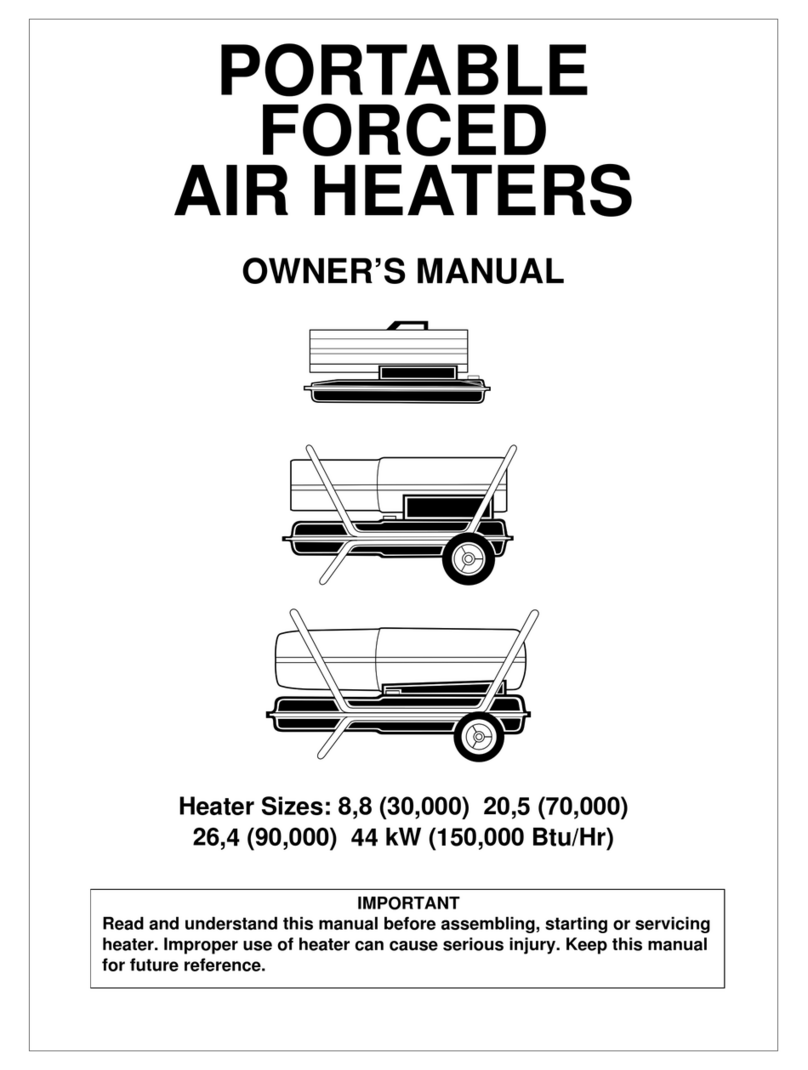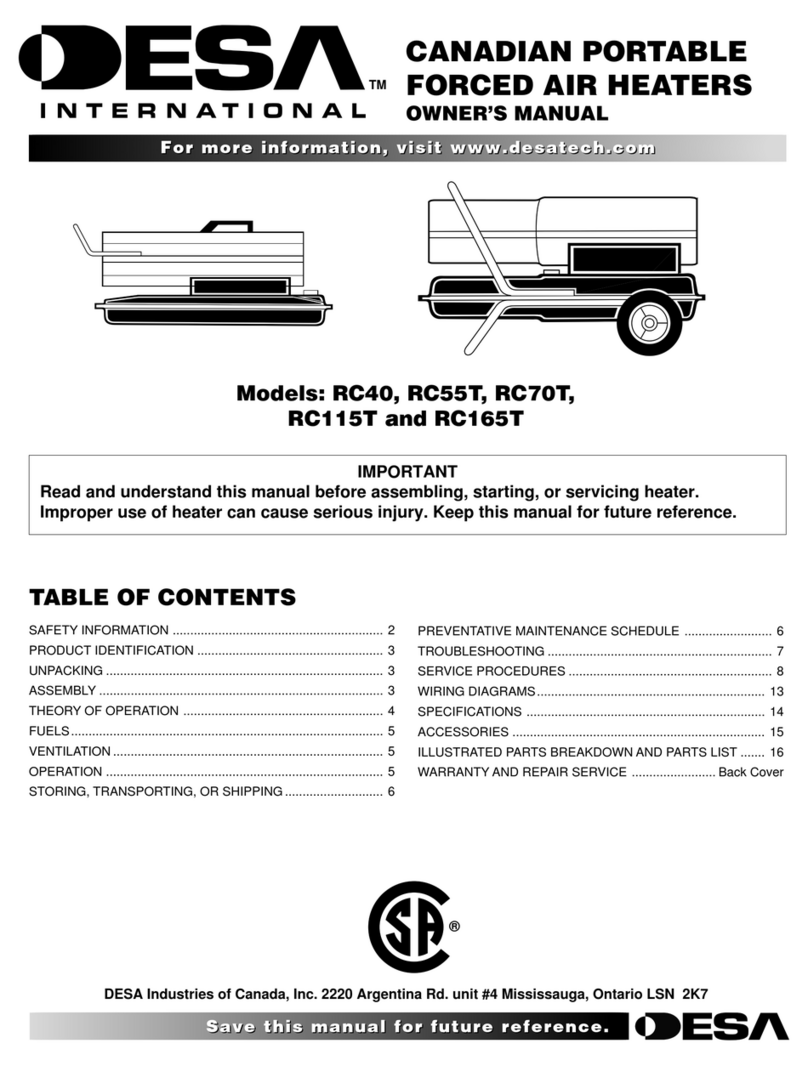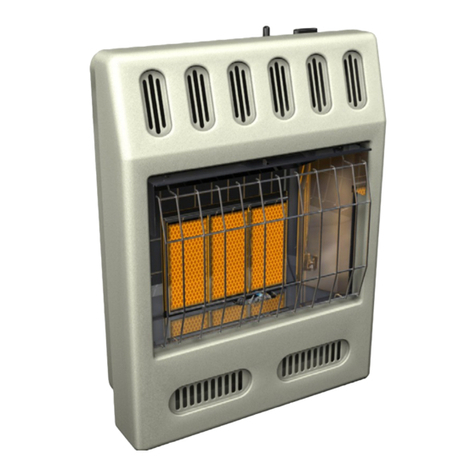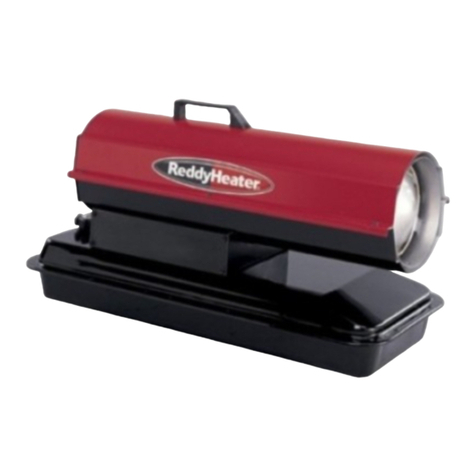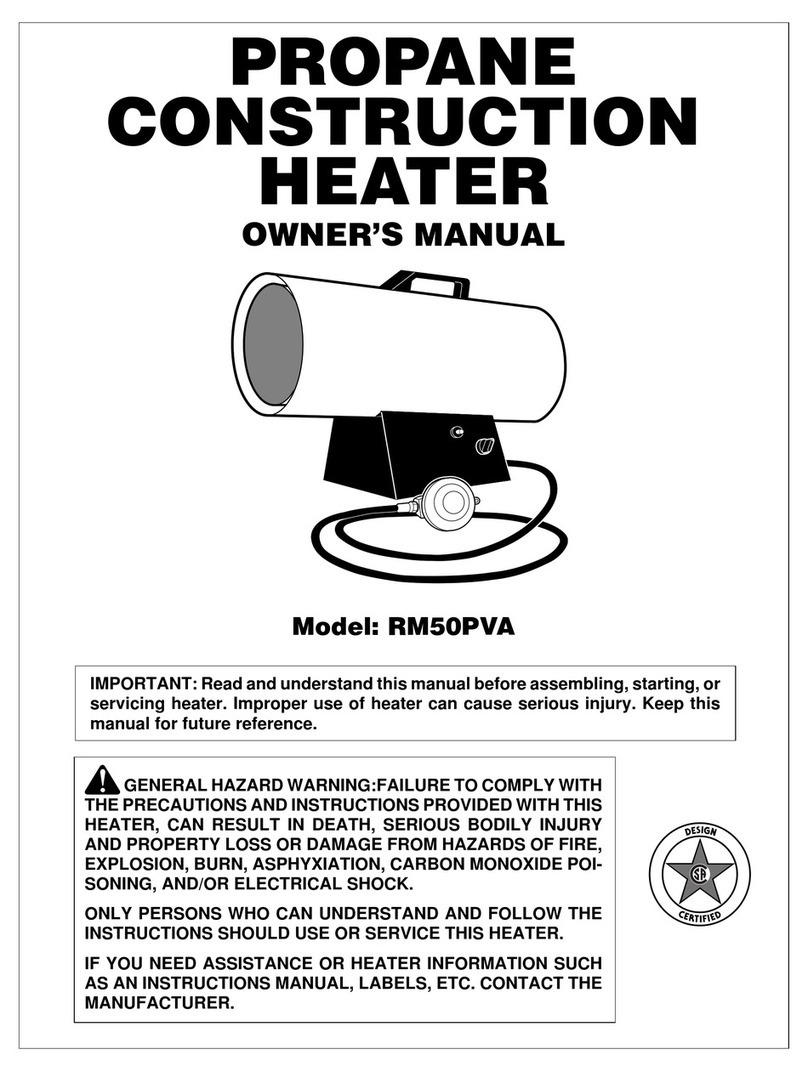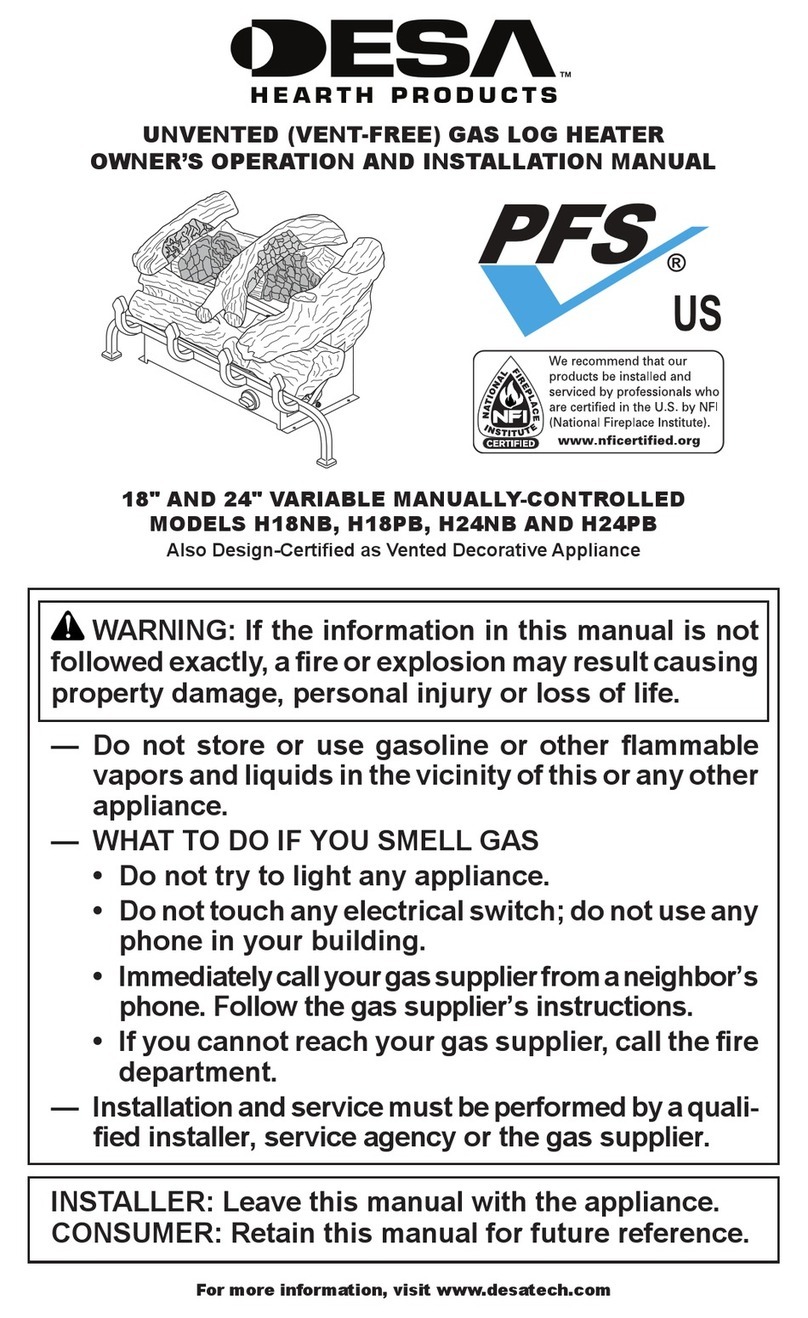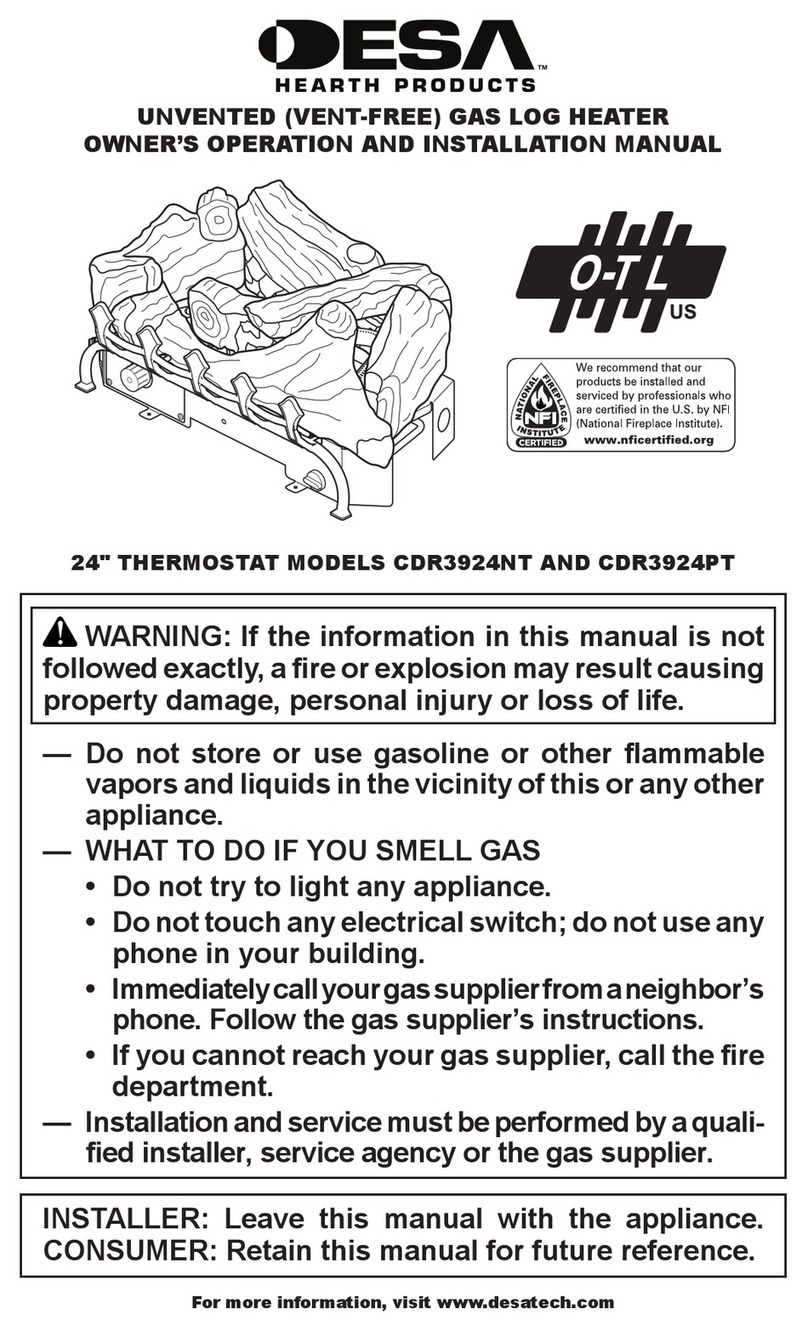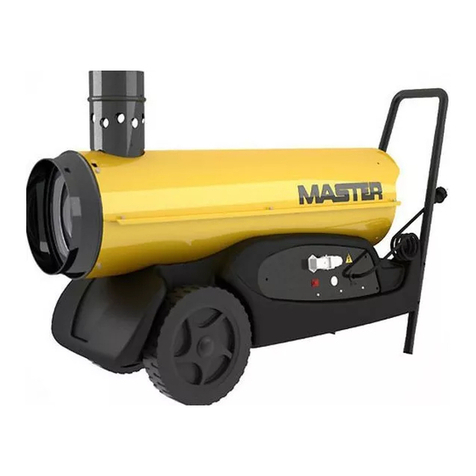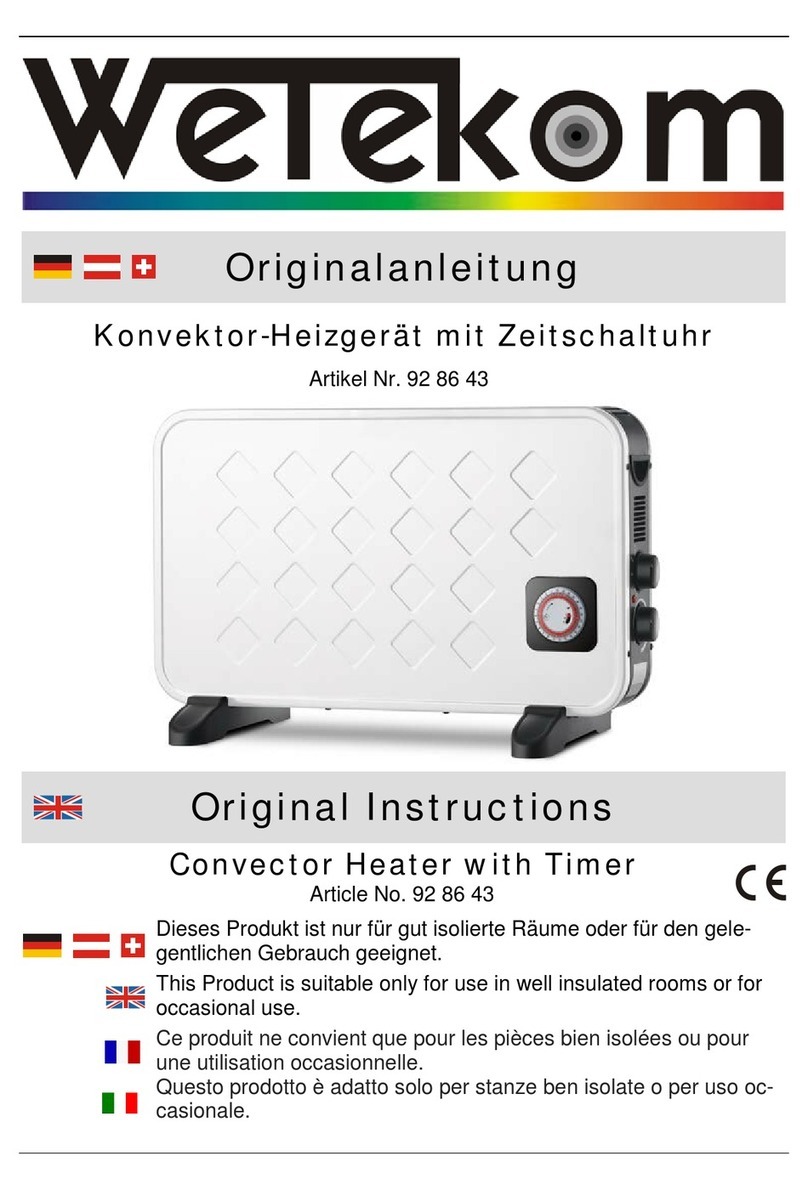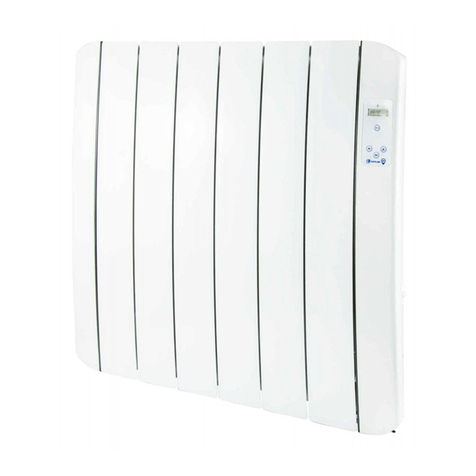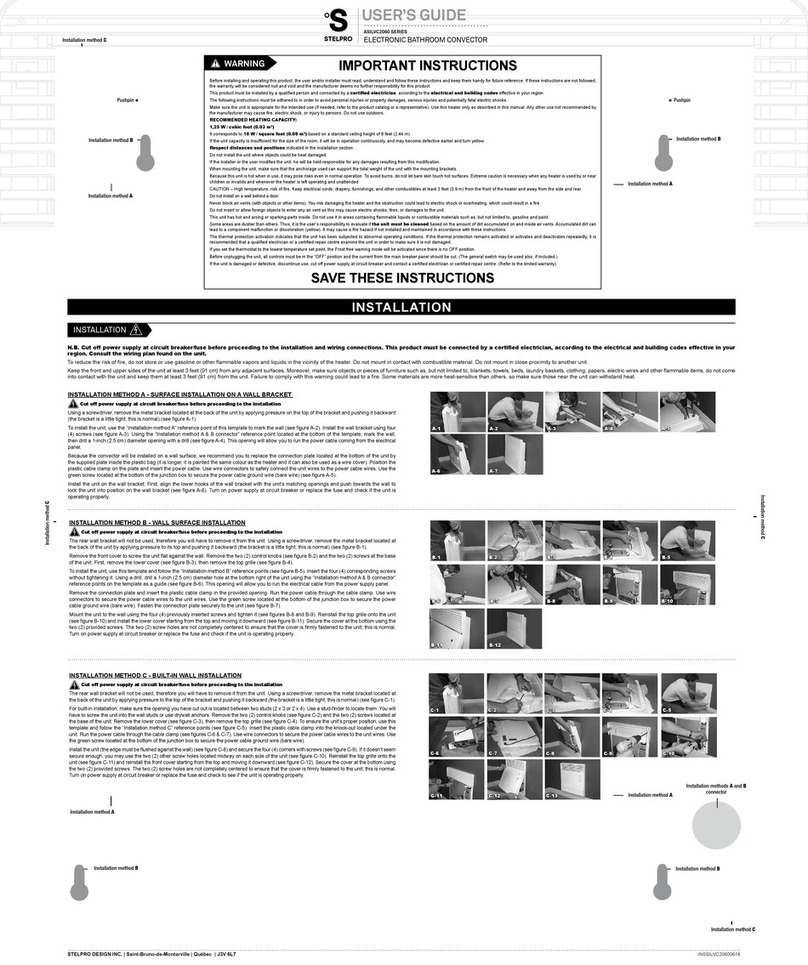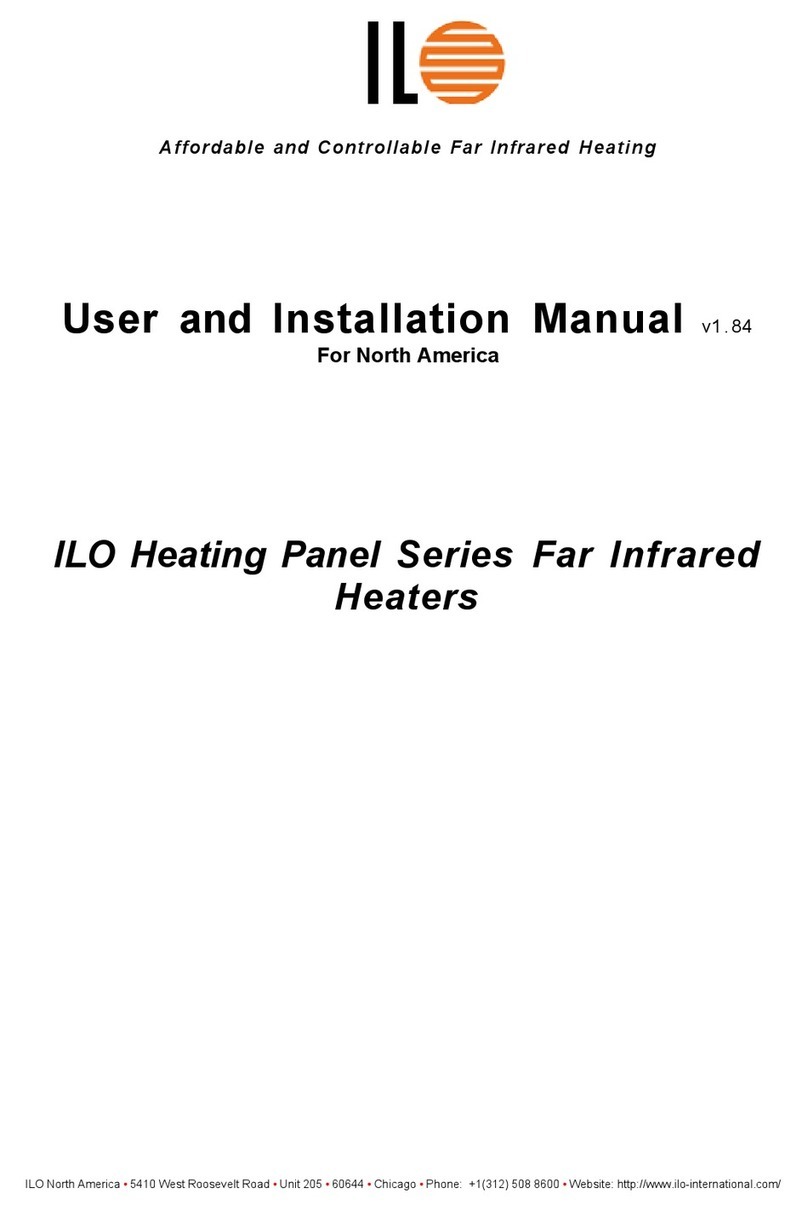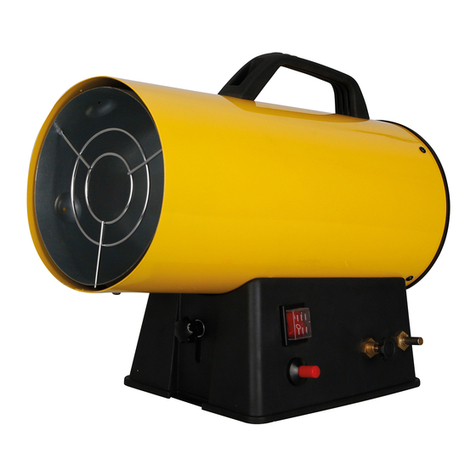
2
Hot Surface Ignition Models Service Manual
SAFETY INFORMATION
WARNINGS
IMPORTANT: Read this owner’s manual carefully and
completely before trying to assemble, operate, or ser-
vice this heater. Improper use of this heater can cause
serious injury or death from burns, fire, explosion,
electrical shock, and carbon monoxide poisoning.
DANGER: Carbon monoxide poisoning may lead
to death!
Carbon Monoxide Poisoning: Early signs of carbon monoxide
poisoning resemble the flu, with headaches, dizziness, and/
or nausea. If you have these signs, the heater may not be
working properly. Get fresh air at once! Have heater ser-
viced. Some people are more affected by carbon monoxide
than others. These include pregnant women, persons with
heartorlungdiseaseoranemia,thoseundertheinfluenceof
alcohol, and those at high altitudes.
Makecertainyoureadandunderstandallwarnings.Keepthis
manual for reference. It is your guide to safe and proper
operation of this heater.
• Use only kerosene or No. 1 fuel oil to avoid risk of fire or
explosion. Never use gasoline, naphtha, paint thinners,
alcohol, or other highly flammable fuels.
• Fueling
a)Personnel involved with fueling shall be qualified and
thoroughlyfamiliarwiththemanufacturer’sinstructions
and applicable federal, state, and local regulations re-
garding the safe fueling of heating units.
b)Onlythetypeof fuelspecifiedon theheater’sdataplate
shall be used.
c)All flame, including the pilot light, if any, shall be extin-
guished and the heater allowed to cool, prior to fuel-
ing.
d)During fueling, all fuel lines and fuel-line connections
shallbe inspected forleaks.Any leaks shallberepaired
prior to returning the heater to service.
e)At no time shall more than one day’s supply of heater
fuel be stored inside a building in the vicinity of the
heater.Bulkfuelstorageshallbeoutsidethestructure.
f) All fuel storage shall be located a minimum of 25 feet
from heaters, torches, welding equipment, and similar
sources of ignition (exception: the fuel reservoir integral
with the heater unit).
g)Whenever possible, fuel storage shall be confined to
areas where floor penetrations do not permit fuel to
drip onto or be ignited by a fire at lower elevation.
h)Fuel storage shall be in accordance with the federal,
state, or local authority having jurisdiction.
• Never use heater where gasoline, paint thinner, or other
highly flammable vapors are present.
• Followall local ordinances and codeswhenusing heater.
• Heatersused in the vicinity of tarpaulins,canvas,or simi-
lar enclosure materials shall be located a safe distance
from such materials. The recommended minimum safe
distance is 10 feet. It is further recommended that these
enclosure materials be of a fire retardant nature. These
enclosure materials shall be securely fastened to pre-
vent them from igniting or from upsetting the heater due
to wind action.
• Use only in well-vented areas. Before using heater, pro-
vide at least a three-square-foot opening of fresh, outside
airforeach100,000Btu/Hrofrating.This heaterproduces
carbonmonoxide, which is listed bytheState of California
as a reproductive toxin under Proposition 65.
• Use only in places free of flammable vapors or high dust
content.
• Use only the electrical voltage and frequency specified
on model plate.
• Use only a three-prong, grounded extension cord.
• Minimum heater clearances from combustibles:
Outlet: 8 Ft. Sides: 4 Ft. Top: 4 Ft. Rear: 4 Ft.
• Locate heater on a stable and level surface if heater is
hot or running or a fire may occur.
• When moving or storing heater, keep heater in a level
position or fuel spillage may occur.
• Keep children and animals away from heater.
• Unplug heater when not in use.
• When used with thermostat, heater may start anytime.
• Never use heater in living or sleeping areas.
• Never block air inlet (rear) or air outlet (front) of heater.
• Never move, handle, refuel, or service a hot, operating,
or plugged-in heater.
• Never attach duct work to front or rear of heater.
• Approved by the New York City Fire Department under
certificate of approval #4803, #4860, #4908, or #4909.
To be used only at construction sites in accordance with
applicable New York City Codes, Regulations, Rules,
Directives, Permits, etc.
•Warning to New York City Residents For Use Only At
Construction Sites in accordance with applicable NYC
codesunderNYCFDcertificateof approval#4803, #4899,
#4908, #4909, or #4934.
For replacement parts contact:








